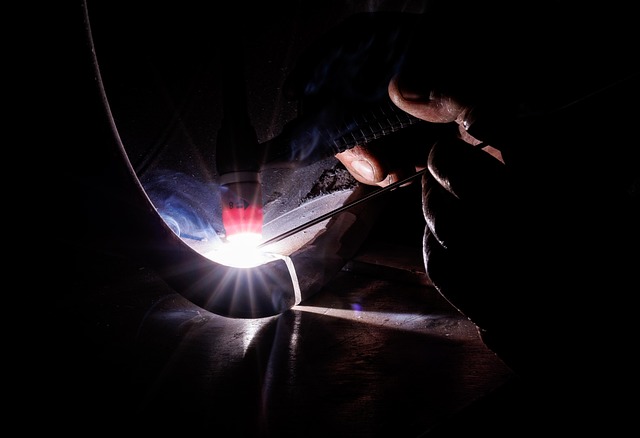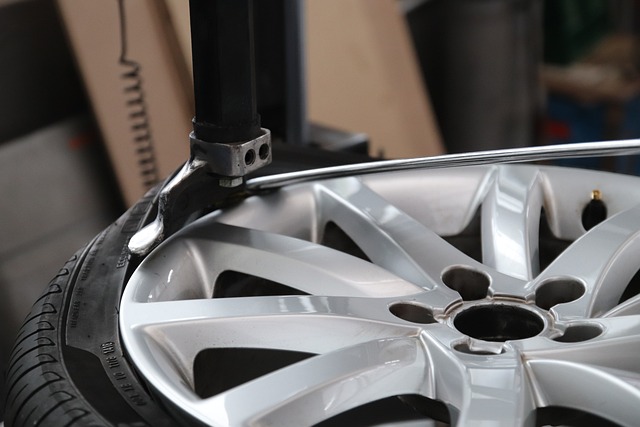Mercedes Infrared Glass Installation: A Comprehensive Guide
Mercedes infrared-reflective glass is a cutting-edge technology that enhances vehicle aesthetics, en…….
Welcome to an in-depth exploration of a cutting-edge technology that is transforming the way we interact with our built environment: Mercedes infrared-reflective glass. This innovative material, developed by automotive giant Mercedes-Benz, offers more than just enhanced visual appeal; it boasts remarkable properties that improve energy efficiency, comfort, and safety in various sectors, from automobiles to architecture. In this comprehensive article, we will navigate through the intricacies of this technology, its global impact, economic implications, technological advancements, regulatory considerations, challenges, real-world applications, and a glimpse into its future potential.
Definition: Mercedes infrared-reflective glass, often referred to as “smart glass,” is a type of advanced window material engineered to dynamically alter its light transmission properties in response to external stimuli. This technology integrates special coatings and layers to achieve high reflectivity in the infrared (IR) spectrum while allowing visible light passage.
Core Components: The glass consists of multiple layers:
Historical Context: The concept of smart glass has been around for decades, but recent advancements in nanotechnology and materials science have driven its development. Mercedes-Benz introduced their version as a solution to address energy efficiency challenges in vehicles and buildings. Over time, the technology has evolved, offering more control options, improved performance, and diverse applications beyond automotive interiors.
Significance: This glass is significant because it provides:
International Influence: Mercedes infrared-reflective glass has garnered global attention due to its potential to revolutionize energy-efficient construction and transportation. Its adoption is not limited to the automotive sector; architects, engineers, and developers worldwide are exploring its use in high-performance buildings.
Regional Trends:
| Region | Key Developments | Market Drivers |
|---|---|---|
| Europe | Leading in smart glass research and implementation, with strict energy efficiency standards driving adoption. | Stricter building codes, government incentives for green technologies. |
| North America | Rapidly growing market, especially in the residential sector, due to rising energy costs and consumer demand for comfort. | Growing awareness of sustainability, tax credits for energy-efficient homes. |
| Asia-Pacific | High adoption rate in commercial buildings and automobiles, fueled by rapid urbanization and technological advancements. | Increasing middle class, government initiatives promoting green construction. |
| Middle East | Emphasis on sustainable architecture and luxurious vehicle interiors drives demand. | Abundant natural resources, high disposable income, focus on environmental sustainability. |
Market Dynamics: The global smart glass market is expanding, driven by increasing energy concerns and the need for sustainable building solutions. According to a 2022 report, the market value is projected to reach USD 3.5 billion by 2027, growing at a CAGR of 12.5%.
Investment Patterns: Major players in the automotive and construction industries are investing heavily in research and development (R&D) to integrate smart glass technology into their products. Governments worldwide also offer incentives for adopting energy-efficient solutions, further fueling market growth.
Economic Impact:
Recent Innovations:
Future Potential:
Key Policies: Governments worldwide have implemented regulations and incentives to promote energy-efficient technologies:
Regulatory Influences:
| Region | Regulatory Focus | Impact on Smart Glass |
|---|---|---|
| Europe (EU) | Stringent environmental standards, building energy performance directives. | Increased market demand, driving innovation in more efficient glass solutions. |
| United States | Energy Star program, local building codes varying by state. | Diverse adoption rates, with some states offering significant incentives. |
| China | Ambitious carbon reduction goals, green building policies. | Rapidly growing market due to government support and urbanization. |
| India | Green building initiatives, renewable energy focus. | Increasing demand for smart glass in residential and commercial projects. |
Main Challenges:
Criticisms and Solutions:
Case Study 1: Mercedes-Benz F01 (Concept Car)
Mercedes-Benz showcased the future of smart glass in their F01 concept car, featuring windows that could transform from transparent to opaque at the touch of a button. This application highlights the technology’s potential in automotive design, offering enhanced driver privacy and an immersive driving experience.
Case Study 2: High-Performance Office Building (New York City)
A prestigious law firm in NYC retrofitted their office with advanced smart glass, achieving significant energy savings and improved occupant comfort. The system automatically adjusted shading based on weather conditions, reducing the need for manual control. This case demonstrates the technology’s effectiveness in large commercial buildings.
Case Study 3: Eco-Friendly Residential Development (Sweden)
A Swedish housing project incorporated Mercedes infrared-reflective glass into every unit, aiming to achieve net-zero energy status. The smart glass helped regulate indoor temperatures, reducing heating and cooling costs. This application showcases the technology’s potential in sustainable residential design.
Emerging Trends:
Strategic Considerations:
Mercedes infrared-reflective glass represents a significant leap forward in window technology, offering solutions to critical global issues while enhancing our living and working environments. Its impact spans energy efficiency, sustainability, comfort, and safety, with diverse applications from architecture to automotive design. As research progresses and adoption increases, we can expect this technology to play an even more pivotal role in shaping the future of our built environment.
Q: How does Mercedes infrared-reflective glass differ from regular tinted windows?
A: Regular tinted windows block a portion of visible light and UV rays but do not dynamically adjust their properties. Smart glass, on the other hand, can actively reflect IR radiation, allowing for precise temperature control and customizable light transmission.
Q: Can smart glass be installed in existing buildings?
A: Absolutely! While it may require more specialized installation due to its advanced features, retrofitting is possible with professional guidance. Many companies offer services for transforming existing windows into smart glass.
Q: Is smart glass expensive to maintain?
A: With proper care, smart glass requires minimal maintenance. Regular cleaning and occasional checks on sensors and actuators are usually sufficient to ensure optimal performance.
Q: How does smart glass impact indoor air quality?
A: By controlling temperature and light, smart glass can reduce the need for artificial lighting and cooling, thereby improving indoor air quality and creating healthier environments.
Q: Can smart glass be integrated with home automation systems?
A: Certainly! Smart glass can seamlessly connect to various home automation platforms, allowing users to control their windows alongside other smart devices through centralized systems or voice assistants.

Mercedes infrared-reflective glass is a cutting-edge technology that enhances vehicle aesthetics, en…….

“Infrared technology is integral to modern vehicle safety systems, particularly in luxury cars like…….

Mercedes infrared-reflective glass, a cutting-edge automotive technology, reflects infra-red light t…….

Mercedes infrared-reflective glass is a revolutionary automotive technology designed to improve comf…….

Mercedes Infrared-Reflective Glass Technology revolutionizes vehicles by reflecting infrared radiati…….

Mercedes infrared-reflective glass is a cutting-edge automotive technology that combines enhanced co…….

Mercedes addresses the issue of cabin heat in vehicles during warm months with its advanced infrared…….